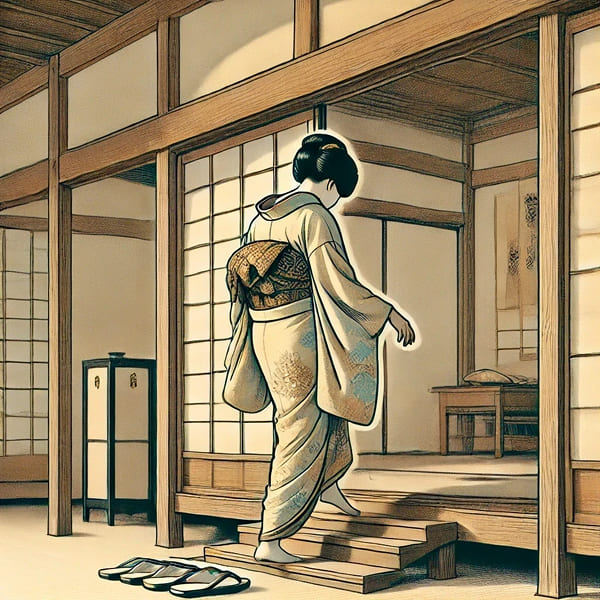The Japanese Custom of Removing Shoes: A Cultural Practice of Cleanliness and Respect

Contents
What if a simple act—like taking off your shoes—could express respect, cleanliness, and spiritual awareness all at once?
In Japan, removing your shoes before stepping inside isn’t just polite—it’s a deep-rooted tradition that reflects core values like purity, mindfulness, and harmony.
Whether you're entering a home, temple, or traditional inn, this quiet gesture draws a clear line between the outside world and the inner space, between chaos and calm.
The Role of the Genkan: Japan’s Traditional Entryway
At the heart of this custom lies the genkan—a small, lowered area at the entrance of Japanese buildings. As guests step in, they are invited to remove their shoes, placing them neatly facing the door.
The raised floor just beyond the genkan marks more than a physical boundary—it represents a transition from public to private, from the outside world to a space of peace and respect.
Japanese homes often have tatami mats, which are delicate and require care. Wearing shoes indoors not only risks damaging these mats but also disrupts the balance of cleanliness that Japanese culture values deeply.
Why Shoe Removal Matters in Japanese Culture
In Japan, cleanliness is more than hygiene—it’s spiritual. Removing shoes is seen as a form of purification. It’s a way to symbolically leave behind the dust and disorder of the outside world.
This tradition is rooted in values such as:
- Respect for shared space
- Mindful awareness of one's impact
- Harmony between body and surroundings
Even without formal rules, the action speaks for itself—it’s a quiet expression of cultural mindfulness.
Beyond the Home: Where Shoes Come Off
This tradition isn’t limited to private homes. You’ll encounter shoe removal in many public and semi-public spaces in Japan:
- Schools often require students to change into indoor slippers.
- Temples and shrines like Kiyomizu-dera in Kyoto or Meiji Jingu in Tokyo ask visitors to remove shoes before stepping onto sacred floors.
- Traditional inns (ryokan) and some restaurants maintain this custom as part of the experience.
Some places offer slippers; others expect you to walk barefoot or in socks—especially on tatami.
Tips for Visitors: How to Navigate the Custom
Traveling in Japan? Don’t worry—this tradition is easy to follow with a little observation.
Rather than memorizing rules, try to:
- Watch what others are doing
- Look for cues like shoe racks, signage, or a raised floor
- Wear clean socks, and avoid shoes that are difficult to remove
- Place your shoes neatly, toes pointing outward
- In summer, if you're wearing sandals or flip-flops, bring a pair of socks—some places require foot coverings for hygiene and respect
These simple actions are seen as signs of good manners and cultural sensitivity.
Final Thoughts: A Quiet Ritual With Deep Meaning
Removing your shoes in Japan is more than just keeping the floors clean—it’s about entering a space with intention, humility, and respect.
It’s a quiet ritual that invites you to be fully present and considerate.
So the next time you find yourself standing in a Japanese genkan, take a moment.
Slip off your shoes—and step into a world shaped by care, clarity, and quiet grace.